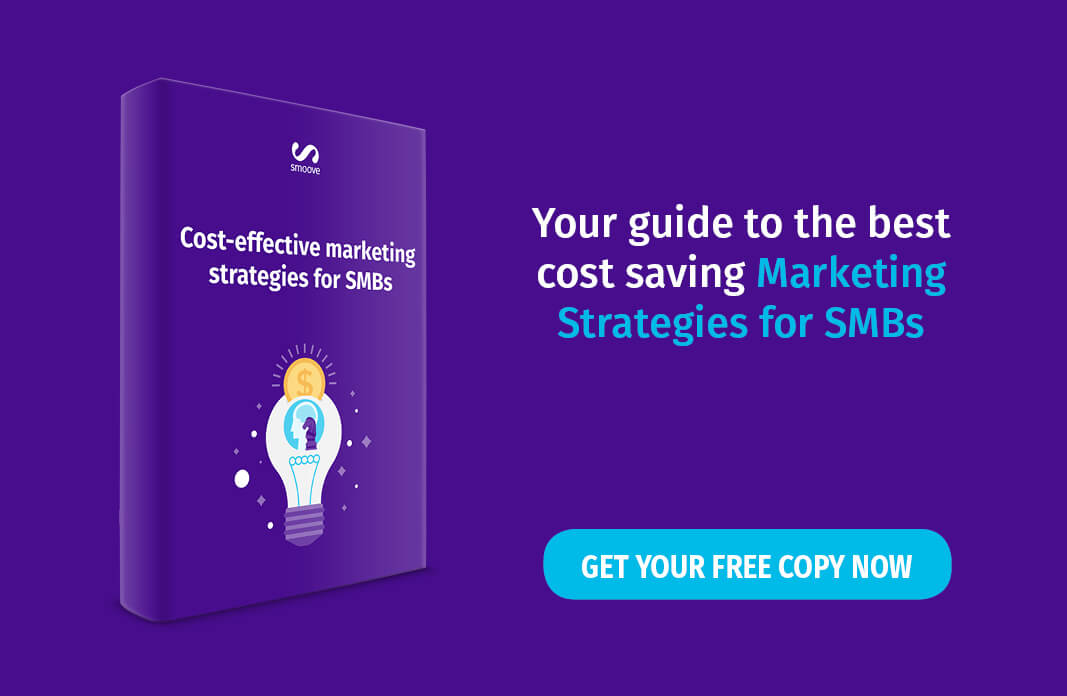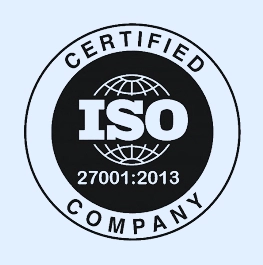It’s all in the numbers. On average, marketers witness a 98% open rate with SMS, and 90% of text messages are opened within 3 seconds. This means that for a business trying to get a message into its customers hands, quite literally, bulk SMS campaigns may be the best way to go. But, how do you ensure that when you send mass messages, they aren’t perceived as spam?
Here are some best practices to optimize your bulk SMS marketing campaigns to make them feel personalized, drive sales, and connect with your customers at the right time.
1. Motivation: The Reason Why
Before you create a bulk SMS campaign, ask yourself your motivation. Why are you choosing the medium of mobile messaging to achieve your goal, and is it your best option? Depending on your business and messaging, the potential of your messages being considered spam will vary.
For example, if you are in the service industry, bulk SMS can serve to confirm or book an appointment and request feedback. But, if you’re in retail, requesting feedback via SMS may not be the best option when compared to landing pages and email marketing.

Source: Screenshot
Let’s look at an example that (almost) everyone will love because it involves pizza. Domino’s pizza created a mobile app to make ordering seamless. Working alongside the app, the pizza chain created a system to order via SMS. Customers can simply text their number with the keyword “Pizza” to order. Then, the company uses these opted-in customers to send out bulk SMS that are personalized and automated based on a person’s profile. They also use geo-targeting to then send mass marketing messages to offer different promotions at different locations. By integrating bulk SMS with their app, they can easily gauge their audience who prefers to order via mobile and then take advantage of this communication method to easily increase sales while optimizing the customer experience. Talk about having your pizza, and eating it too!
As with all marketing messages, the goal is to drive transactions and grow sales for the company’s bottom line. By understanding why you’d employ SMS marketing over another strategy, you will be able to drive a smarter campaign with the right messaging, timing, and call to action.
2. Personalization: The Who
Following the same best practices as email marketing, it’s useful to segment your database and personalize your messages. When sending bulk SMS campaigns, you need to ensure it still feels like the receiver is the only person getting the message because it’s highly targeted and tailored to their needs.
Segments can be created by demographic, location, interests, and purchase history. By integrating your CRM with your SMS platform, you can easily achieve this strategy. Additionally, an easy way to accomplish a personalized touch is to include the tag that will address the customer by name. But, even if you don’t feel the need to use first names, you can still personalize your messaging by understanding various customer demographics and personas. These facts help dictate their needs and preferred method of communication.
With texting, age is a key demographic to consider based on needs and habits. Younger generations will be more likely to text back, whereas older customers may desire more information via a phone call. If you want to open the two-way street for texting back and forth to grow a customer relationship, you can use a high-end chat bot to have a full conversation with those who reply via text.
For example, an innovative company that is taking SMS to a whole new level beyond simply transactional and marketing messages is Casper mattresses. Playing on the brand proposition to provide a good night’s sleep, Casper designed a SMS text bot called Insomnobot that can text 2,000 responses to people who need someone to talk to when they can’t fall asleep between 11PM-5AM (when the rest of the world is dreaming). In this way, the personalized approach and idea of being available just to “talk,” makes the brand well loved by its customers and insomniacs alike.
For this reason, you can tailor your call to action based on a user’s preferences and previous actions so they feel like you’re opening the door for communication rather than only sending messages one-way. Another option is to set up a URL (landing page) that is directly tied to the SMS campaign to drive traffic and provide a larger space to relay your message and call-to-action with more information than a text message can provide.
By interacting with your customers as if they are the only person receiving the message, a customer feels more valued, trusts the brand, and will be more likely to remain loyal.
5. Content and Automation: What to Send
Since text messaging is exactly that – solely text – the importance of content is maximized as there are no visuals. In this case, you have to be sure to give the customer exactly what they want and make it easy to read, understand, and in the event a response is needed, reply. The use of strong keywords and a clear call-to-action can help achieve success. Regardless of the audience, use clear and concise copywriting.
An easy way to provide the right message to the right people, at the right time, is the use of automation. You can create automated triggered messages that send based on an action that a user takes.
Some different types of useful messages to send include:
- Retail: shipping and delivery updates
- All: customer service to deal with an issue
- Service: booking or canceling appointments
- Service/Financial : payment notifications and updates
And, for legal compliance, it’s key to include an easy way to opt-out in every message. That’s the kind of content that is non-negotiable.
4. Timing: When to Deploy
Like all marketing messages, timing is key. Not only is it important to consider the day and time to send a bulk messaging campaign, but it’s also important to understand the right frequency. Text messaging is a highly personal medium; it’s reaching people on the device that they use most to communicate with friends and family, and as a daily resource.</p

Source:Screenshot
The text messaging should serve a purpose, but also be consistent enough to build an expectation and help establish how your brand communicates with your customers. When a customer opts-in for a campaign, you should let them know how frequently they can expect messages. For example, those who opt-in to receive SMS messages from sandwich chain Subway know that they will receive weekly promotions, based on their location, because that’s how their marketing materials advertised the campaign. After enabling SMS marketing, Subway witnessed an 85% retention rate because they were reaching the customers who wanted these offers and using metrics to send the promotions during the appropriate day part.
Using A/B testing to find out the best time for messages and also adjusting content (keywords and the call-to-action) can show you what works best in real-time. According to data, Mondays have the lowest success rate since people are generally getting back to work from their weekends.
5. Testing: How to Avoid Spam
When initiating your first mobile messaging campaign, you can consider using a sample size of your database to test the results before mass messaging your entire list. The last thing you want to do with any marketing effort is receive opt-outs and lose a contact record for a current or prospective client.
In an effort to avoid messages that feel like spam, triggered messages based on a customer action can serve as a solid beginning (as mentioned in tip #2). This is because a customer who feels like the message is extremely relevant and meant for them will feel valued, rather than like they are receiving a marketing message for no reason.
6. Cross-Channel Campaign: Where to Market
The best marketing campaigns don’t exist within a vacuum. These campaigns reach their customers across multiple touch points to engage and grow brand awareness by incorporating bulk SMS messaging, email marketing, social media marketing, and the like. By leveraging cross-channel marketing, or ensuring your message moves along with your customers on all digital and offline platforms and across any device, you can follow your customer on their journey and guide them towards a purchase.
When you use SMS messaging to enhance a marketing message, a best practice is to use the same keywords across the campaign so that it is recognizable. You should also track where and when the customer engages with your message so that you can start segmenting your audience and reach them in the communication method that best suits their preferences.
Cosmetic company Kiehl’s is a good example of how to take advantage of cross-channel marketing to boost sales. They created a campaign where customers could sign up to receive 3 location-specific offers per month either via SMS by texting KIEHLS to the short code they advertised or by opting-in on the Kiehl’s website. After this campaign, Kiehl’s witnessed that over 73% of those who opted-in actually made a purchase after receiving an offer via SMS. And, better yet, 81% provided feedback via a survey to make improve the campaign. Furthermore, they also use artificial intelligence to send SMS for reordering based on purchase history data that knows a customer would need to replenish their supply.

Source: Screenshot
Additionally, in an effort to incentivize customers to engage with your brand on various mediums, from social media to email marketing, it’s useful to offer discounts that are exclusive to each medium. To exemplify, online travel agency (OTA) snaptravel.com offers a 30-50% discount for those who book travel via SMS or Facebook Messenger.
7. Consequences of Doing it Wrong
Sometimes it’s useful to simply know what not to do when it comes to SMS mass marketing, especially because there are legal implications as customers are protected by the Consumer Protection Act (CPA) and regulated by the Federal Communications Commission (FCC). The most important thing to know is that in order to send a SMS, you must receive an opt-in from your customer. Since they opt-in, you also have to provide an easy way to opt-out, using specific keywords.
With potential financial penalties, opt-outs, and maybe worst of all, unhappy customers, knowing the law and best practices is extremely important before executing your bulk SMS marketing strategy.
Wrap-up
Bulk SMS messaging provides for a quick and immediate method to communicate directly with your customers. In order to optimize your campaigns, decide on the who, what, when, where, why and how by questioning your motivation, deciding on the type of message, testing when to send it, using personalization and automation and creating the right content to drive sales.
Expanding your campaign across different platforms and devices and understanding your audience’s needs and preferred method of communication should be top of mind because marketing messages are all about creating a two-way street of open communication. When it comes to SMS, these best practices will help avoid sending messages that customers consider to be junk.
What kind of message are you ready to send? You’ll never know the potential success and increased sales if you don’t start typing away.



